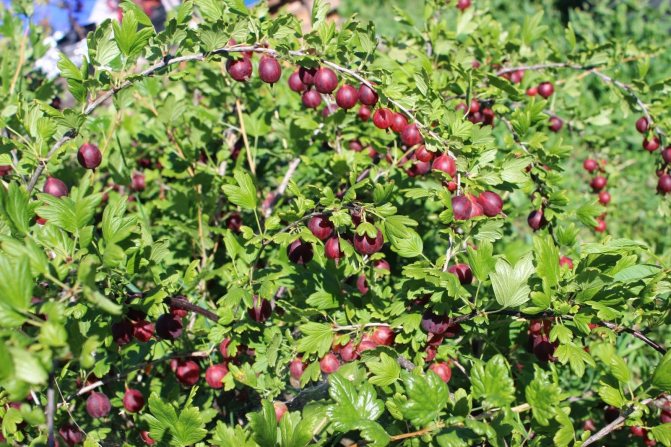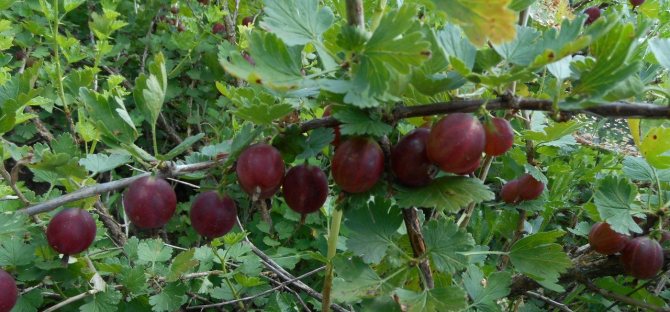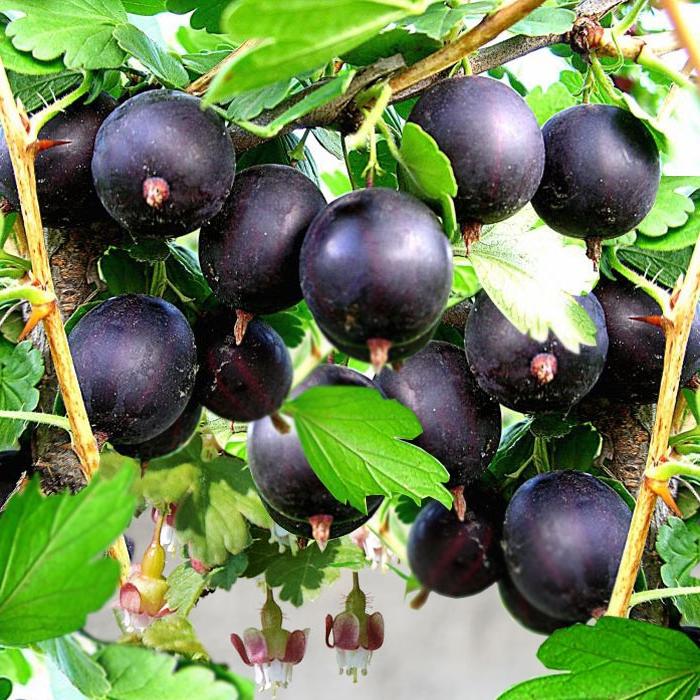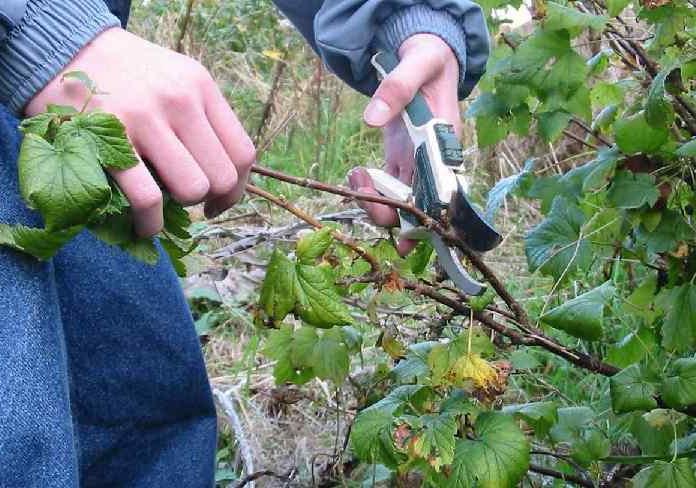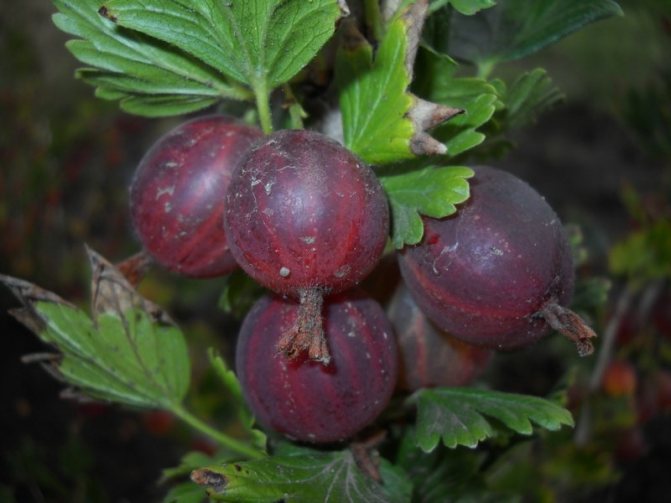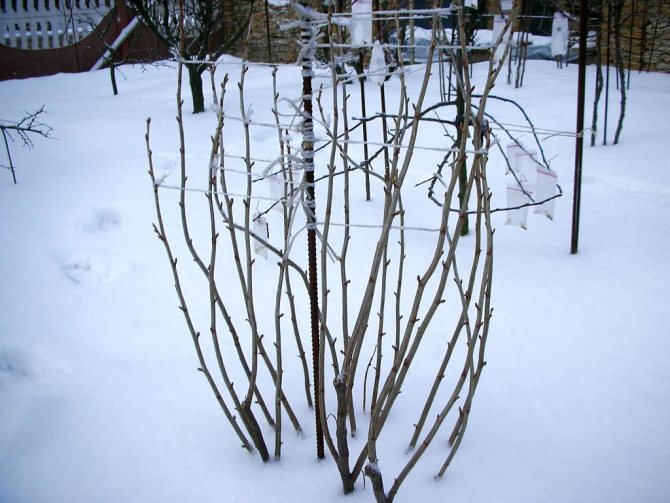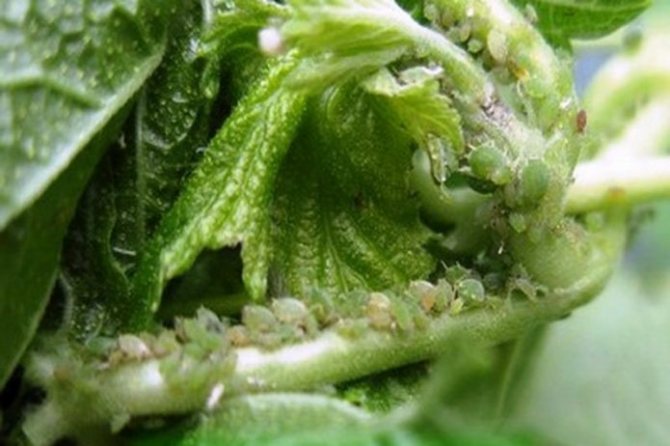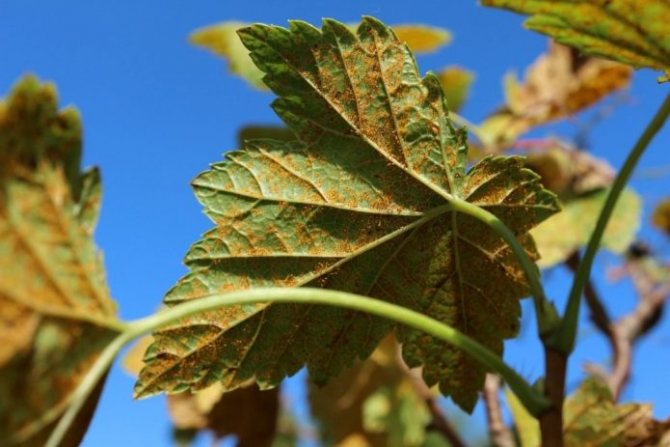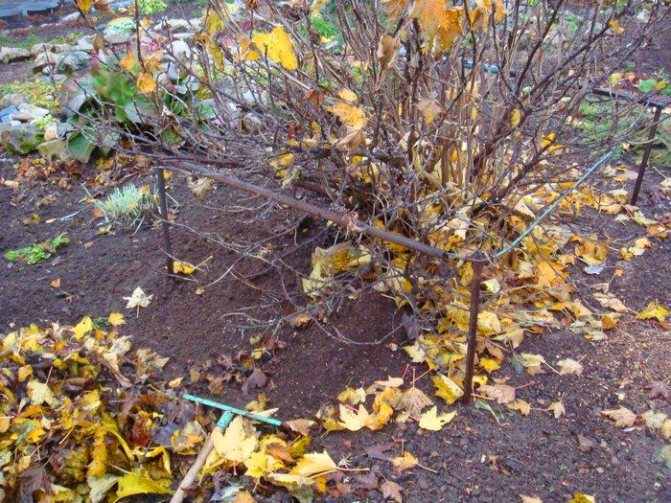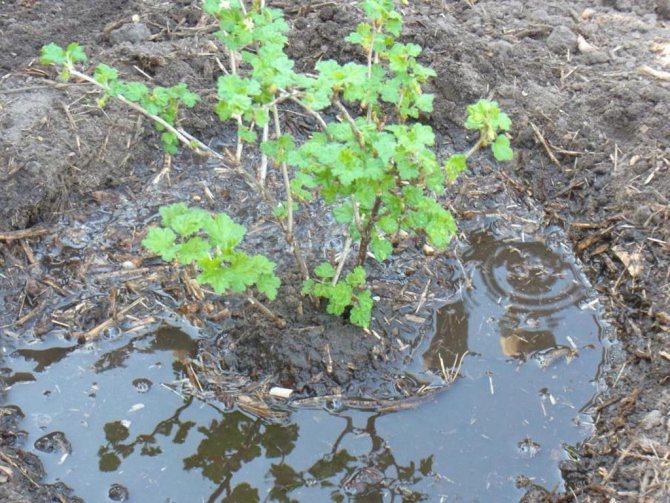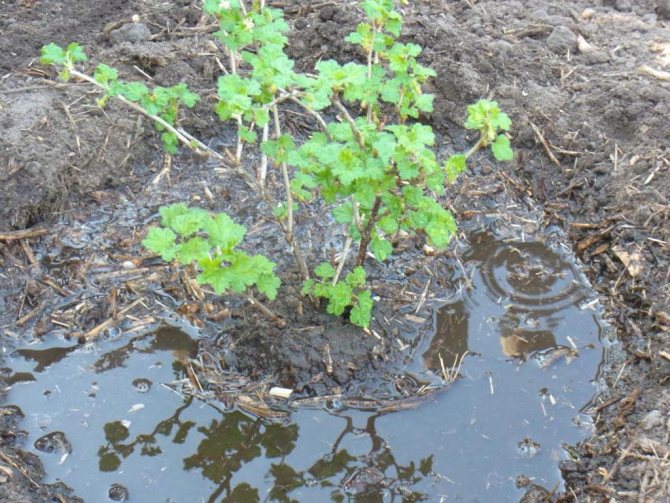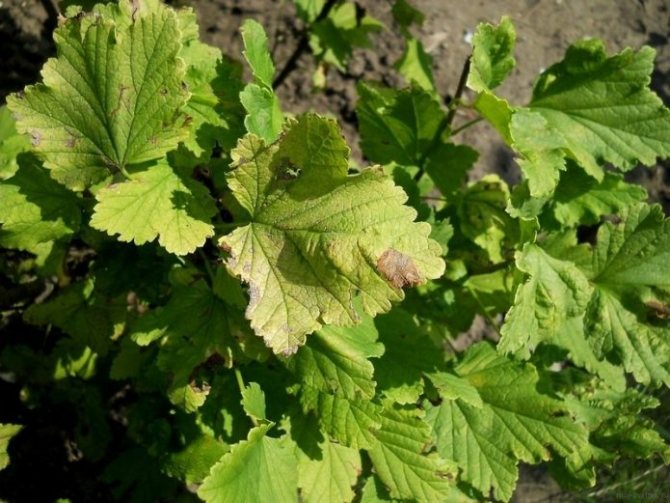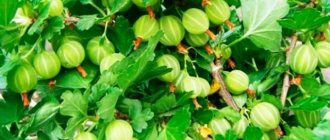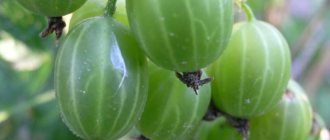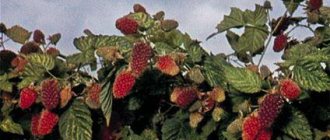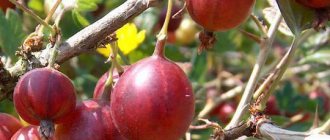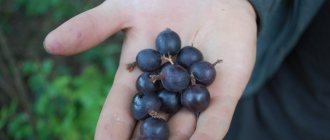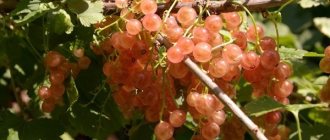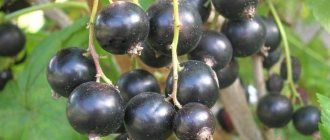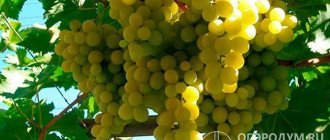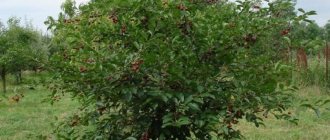The Commander is a striking representative of the beardless gooseberry varieties, which are especially popular with domestic gardeners. It has a pleasant sweet and sour taste and high yield. In the article we will consider the characteristics of the variety, its main advantages and disadvantages, as well as the features of agricultural technology.
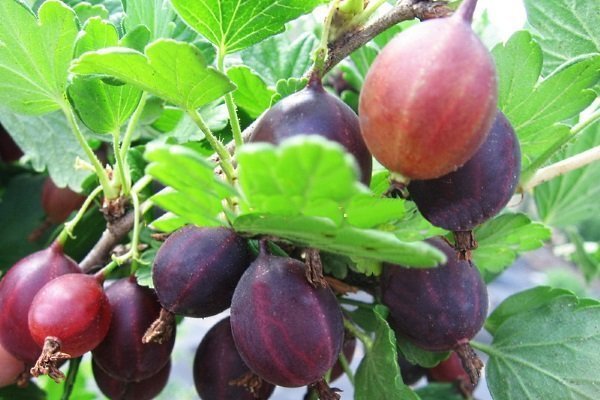
gooseberry variety "Commander"
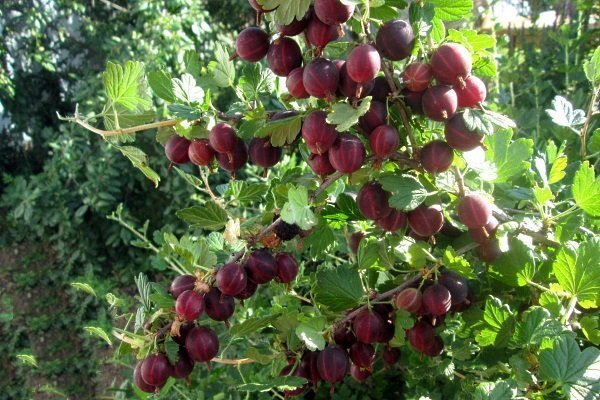

gooseberry "Commander" is in demand among experienced gardeners, since the absence of thorns makes it easier to harvest
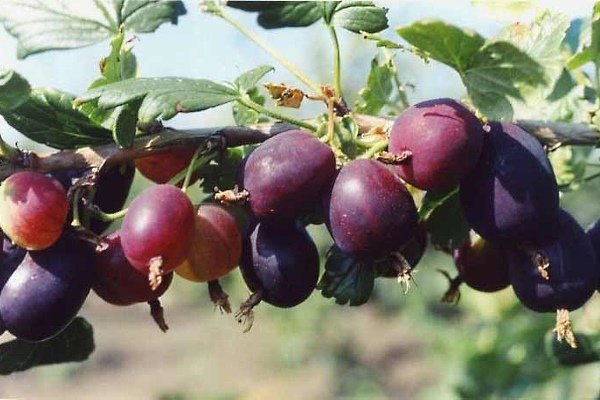

ripe fruits of the "Commander" variety are fragrant, have high taste
Description of gooseberry Commander
Gooseberry Commander is also known under the name Vladil, which he received from his creator V. Ilyin. The variety was bred in 1995 by crossing the Chelyabinsk Green and African. The thornless self-pollinating variety inherited winter hardiness, disease resistance and high taste characteristics of berries from its progenitors.
The commander is recommended for cultivation in Central Russia, the Middle Volga region, West Siberian and Ural regions. The crop is a dense, compact shrub with bright green foliage and almost black berries. Fruiting occurs at the end of June and continues until August. The yield from one adult bush is about 5-6 kg.
Breeding information
The history of the "Commander" gooseberry begins in the South Urals, in the laboratory of the Research Institute of Fruit and Vegetable Growing under the leadership of Professor V.S. Ilyin. It is noteworthy that this selection, which has become famous, is only a small, albeit wonderful part of the general work of the professor and his wife to develop new varieties of many garden berry crops.
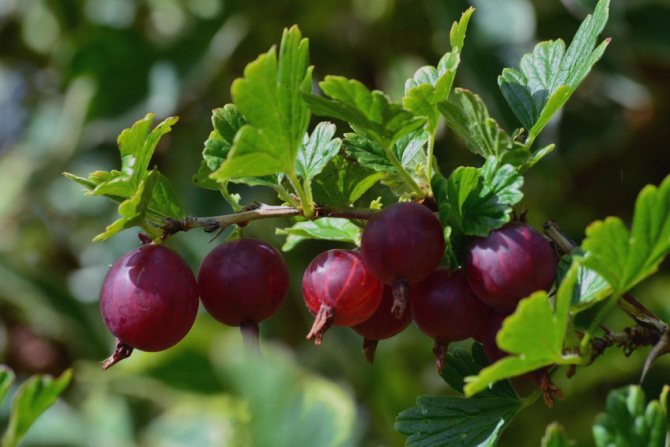

The "parents" of the Commander were the varieties "African", which gave him a rich dark color, and "Chelyabinsk Green". In addition to the absence of thorns, the variety is valued for other high quality characteristics.
It is interesting! Just 150 years ago, gooseberries were much more impressive. The largest berries mentioned in the works of Chalz Darwin gained weight up to 50 grams (the size of a large plum)! However, at the beginning of the twentieth century, a disease brought in from Ireland led to the need for crossing with American species, and the gooseberry lost its former size forever.
Variety characteristics
This gooseberry belongs to the II group of varieties, as it is a hybrid. Commander is considered a dessert, but the taste of its fruits is still inferior to the "classic" varieties of gooseberries of the 1st group. The assessment of the tasting committee is 4.6 points out of 5 possible. Although the taste of the Commander berries does not reach the "standard", this variety has not lost its popularity for several decades due to its tenacity and high yield.
The main characteristics of the hybrid:
- mid-early ripening;
- thickening of the bush;
- lack of thorns;
- small size of berries, lack of pubescence;
- resistance to fungi;
- low transportability.
Bush
The height of an adult bush usually does not exceed 1.5 m. Young shoots are slightly curved, slightly spreading, and have an average thickness. Commander is characterized by high thickening, which, in the absence of regular pruning, can lead to a decrease in yield and crushing of berries.
The stems are not pubescent; when exposed to sunlight, they acquire a pinkish tint.Modified thorns can be found near the root of the shoots, but they are soft and do not interfere with harvesting.
The leaves on the bushes are large, light green, slightly shiny. The leaf plate is round in shape with pointed teeth at the edges, dense. The buds are medium in size, elongated with a sharp tip. The gooseberry blooms yellowish-green, with a light pinkish bloom of flowers in the second half of May.
Berries
The main feature of the variety is the burgundy-brown hue of the fruit, which becomes almost black by the end of the ripening period. Depending on the agricultural technique, the Commander berries can be either small or large. The average weight is 5-7 g. They are distinguished by a regular rounded shape and one-dimensionality, do not have pubescence.
The sugar content is within 13.1%, acid - 3%. The pulp is sweet and sour, quite juicy, burgundy in color. The berries have a delicate, pleasant aroma. The skin is delicate, glossy, breaks easily. The stalks are quite thin, but strong. The seed bursa is small, the number of seeds in the berries is average.
Yield
Gooseberry of the Komandor variety has a high stable yield throughout the life of the bush. With good care and competent feeding, an adult plant can bring up to 8 kg of berries annually. But even throwing a bush, you can get about 2 kg per season.
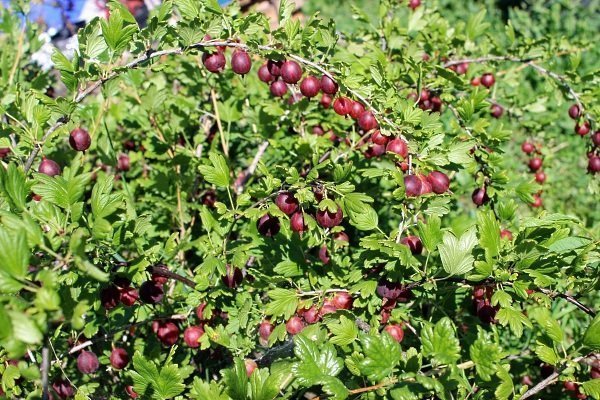

Commander is a self-pollinated variety, so you do not need to plant other gooseberry bushes on your site to get a crop. However, experienced gardeners note that the presence of several bushes of this crop increases the Commander's yield by almost a third. If the area in the garden is limited, you can solve this problem by planting a bush near the neighboring gooseberry plantings.
Ripening period
Under favorable weather conditions, the first gooseberries of this variety can be tasted at the beginning of June. However, during this period, the berries still do not gain sweetness, so they seem too sour. The main crop is usually harvested in the second decade of July.
If you plan to consume fresh gooseberries or use them for processing, it is advisable to wait until the harvest is fully ripe. During this period, the berries become burgundy-brown and acquire a special sweetness. For storage, the crop is harvested in mid-June, a few weeks before the fruit is fully ripe.
Transportability
This variety is characterized by low transportability. The thin skin breaks easily during transportation, the berries are deformed and let out juice. You can minimize losses by placing the fruits in wide cardboard boxes in 3-4 rows. For transportation, the crop is harvested at the stage of technical ripeness.
When harvesting, the berries should be plucked with the stalk, since the delicate peel is easily damaged even with light pressure. To make the berries easier to transfer, do not pick them after rain or in the morning after dew. Wait until the fruits are completely dry. This will not only save them from damage during collection, but will also increase the shelf life.
Drought resistance and winter hardiness
Gooseberry is a moisture-loving culture. In hot periods, before the berries appear, the bush must be watered every day, consuming at least 3 liters of water. As soon as the berries begin to change their color to brown, you need to water the Commander every other day.
If, for some reason, such frequent watering cannot be organized, the near-trunk circle of the bush must be mulched with hay or peat. This will protect the plant from excessive moisture evaporation in the root area.
A significant advantage of the Commander gooseberry over other varieties is its winter hardiness. In winter, the plant can withstand a drop in air temperature to -30 degrees, which allows it to be grown in the middle lane.
Late blooming is also a big plus, since return frosts in spring will not damage future crops.
Disease and pest resistance
This variety is resistant to most common diseases. Powdery mildew is a problem from which all "classic" varieties of the 1st group suffer, the Commander is practically not afraid. Bushes are rarely affected by fungi, but competent preventive treatments reliably protect plants from them.
Under unfavorable weather conditions, the occurrence of septoria and columnar rust is possible. Mosaic disease is especially dangerous, since there are no effective ways of treating it yet. The commander is not susceptible to attack by sawflies, but occasionally he can be affected by aphids and gall midges.
Advantages and disadvantages of the variety
The Commander is rightfully considered one of the best thornless gooseberry varieties, so it can be found in many summer cottages of our homeland.
Its main advantages include:
- high productivity;
- ease of harvesting due to the absence of thorns;
- good frost resistance;
- pleasant taste;
- extended fruiting;
- immunity to powdery mildew;
- undemanding care;
- versatility of the use of berries;
- compactness of the bush.
The benefits include the unusual dark color of the fruit. If you are planning to grow gooseberries for sale, rest assured that the glossy black berries will attract buyers.
However, some of the virtues of culture entail certain difficulties. So, a long period of fruiting allows you to get a harvest throughout the summer. This is a definite plus. But at the same time, you will have to constantly monitor the ripeness of the berries and pick them regularly until they crumble.
When planning to plant the Commander on your site, it is useful to know not only the positive qualities of the hybrid, but also its disadvantages.
Gardeners distinguish the following cultivar disadvantages:
- small size of berries;
- low transportability;
- short shelf life of the crop;
- instability to spotting.
What kind of harvest
The yield of the Commander is quite high - up to 6.5 kg. Ripe berries are picked with a stalk. Harvesting is preferable in dry and cloudy weather.
The fruits can be harvested while still unripe - then they are suitable for processing (making jam, compotes, jams). To eat fresh gooseberries, it is better to wait until the berries are fully ripe. The ripening of the crop can be easily identified by the dark red color of the fruit. Ripe fruits are stored for 5 days, and unripe ones - much longer (4–5 weeks).
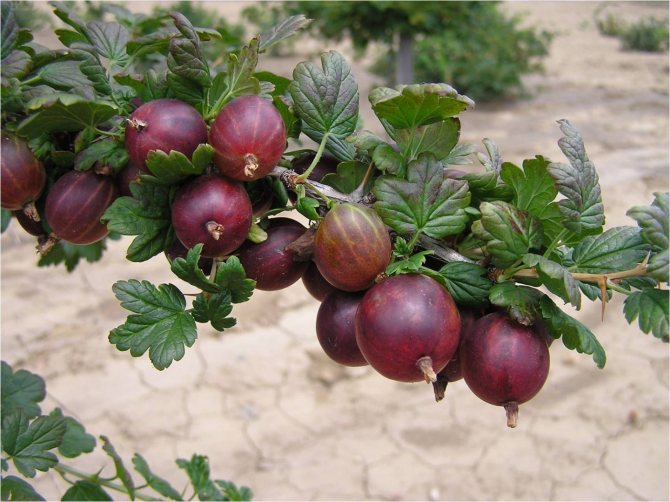

The Commander's bush can produce up to 6.5 kg of berries
Landing features
In order for the gooseberry to successfully take root in a new site and quickly begin to bear fruit, it is necessary to choose a good seedling and plant it correctly. Buy planting material only from reputable sellers or specialized nurseries. An infected or damaged plant may be sold to you in the market.
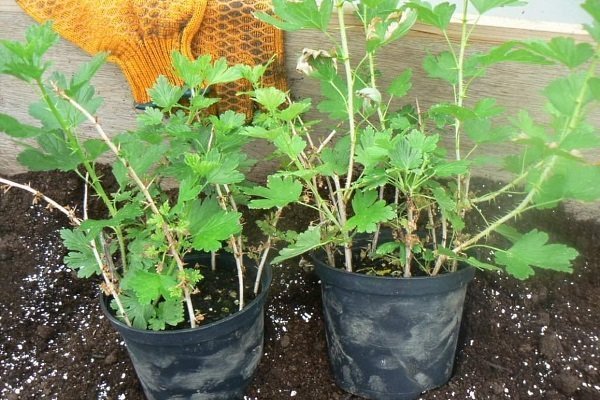

After purchasing a seedling with an open root system, it is advisable to plant as early as possible so that the plant does not dry out. The plastic bag and burlap (newspaper), which are wrapped around the roots, should be removed immediately before planting.
A plant with a closed root system is planted along with a clod of earth. Before planting, the gooseberries in the container should be kept in a diffused shade in the open air for about a week to harden.
Choosing the right place
Gooseberries of the Komandor variety are demanding on the illumination of the territory, therefore, for planting, you should choose sunny areas protected from drafts. You can plant a hybrid in a diffused shade, but you should not wait for a good harvest. With a lack of light, the berries become smaller and tasteless.
Although the Commander is hygrophilous, areas with a high location of groundwater are also not suitable for planting crops. With an excess of moisture, there is a high risk of decay of the root system, which leads to the death of the plant.For gooseberries, areas with loamy, sod-podzolic or sandy loam soil are best suited.
Boarding time
Experienced gardeners note that plants planted in the first weeks of October show the best survival rate. In this case, before the onset of frost, the young roots will have time to get stronger and grow, and the soil will compact and settle.
In each region, frosts come at different times, so it is better to focus on the weather conditions. In the southern regions, the landing can be postponed until early November, and in the northern regions, it is better to postpone it to September.
Gooseberry bushes, planted in the spring, have a much worse survival rate. The fact is that overgrowing crop roots grow better at a lower positive soil temperature. When planted in spring, the root system grows slowly and the plant suffers from a lack of nutrition.
In spring, gooseberries are planted after the soil has thawed. This usually happens in early to mid-April. It is important to have time to plant the plant in a permanent place, while it has not yet come out of dormancy. If you notice that the buds on the seedling have begun to bloom, it is better to postpone the planting until autumn.
Soil preparation
Plant the seedlings of the Commander in light, loose soil. It is possible to improve the structure of a heavier clay soil by digging up a section of sand at the rate of 10 kg per 1 sq. m.
The procedure is carried out a week before planting the bushes:
- Prepare a pit 50x60 cm.
- Leave the upper darker part of the soil for filling the seedling, and remove the light one.
- In order for young gooseberries to have enough nutrients for growth, you need to properly fill the pit. Add half a bucket of compost, 100 g of superphosphate, a glass of ash and mix.
Landing scheme
Plant seedlings on a cloudy, windless day. Adhere to the following sequence of actions:
- Place the seedling vertically in a previously prepared hole and carefully sprinkle it with the soil set aside during digging.
- Drizzle generously with warm water.
- Mulch with peat and cut the seedling, leaving no more than 5 cm above the ground.
Since the Commander is compact in size, the bushes are planted at a short distance from each other. On industrial plantations, gooseberries are planted according to the scheme 0.8x3 m, and in summer cottages, a distance of 0.7x1.5 m is sufficient.
Do not plant the bushes closer than recommended, as young shoots will intertwine with each other and create shade, which will negatively affect the quality of the berries.
Gooseberry care rules
Gooseberries are not a capricious crop, so you don't need to spend too much time on farming. The main work falls on the spring and autumn, since it is during this period that pruning and preventive spraying are carried out.
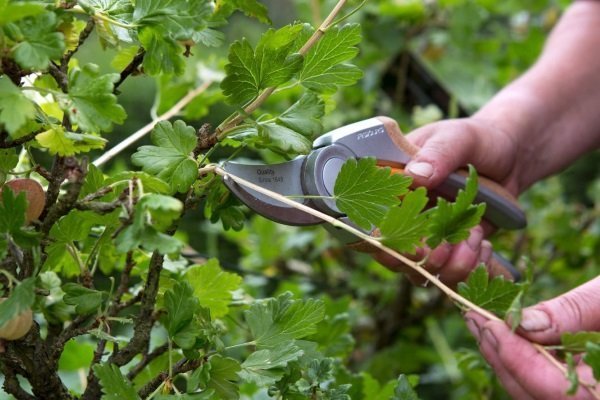

For active growth and good fruiting, the bush requires:
- regular watering;
- loosening the soil, removing weeds;
- competent feeding;
- mulching the soil.
Watering
The commander does not tolerate drought well - the leaves turn yellow, become smaller, the berries fall off. In the summer heat, gooseberries are watered daily, in cool weather - a couple of times a week. To determine the need for watering, you need to monitor the state of the peri-stem circle. If the soil under the bush is completely dry, then the roots also lack moisture.
Reduce watering a couple of weeks before the fruits ripen, as excess moisture negatively affects the taste of the berries. After harvesting the main crop, watering is continued with the same intensity. Loosen the soil regularly to avoid stagnant water in the root zone.
Support
The high yield of the variety contributes to the fact that the lower branches fall to the ground under the weight of the berries. The fruits get dirty and begin to rot from contact with damp earth.
The presence of supports will help to avoid such a problem:
- Old pipes, stakes or high poles can serve as a support.
- At a height of 50-80 cm, tie a wire to them, and you get a kind of vertical trellis.
- Tie 4-5 branches from each bush to a support at a distance of about 15 cm.
This design allows you to keep the berries of the lower branches clean.
Top dressing
For the harmonious development of the Commander gooseberry, full-fledged balanced feeding is needed. In the spring, berry bushes require strength for the development of young shoots and budding. Organic fertilizers such as rotted manure and compost are well suited for these purposes. They are introduced into the soil between the bushes immediately after the snow thaws.
In early May, it is better to feed the bushes with nitrogen-containing mineral fertilizers: urea, superphosphate, ammonium sulfate.
During the fruiting period, the bush spends a lot of energy, and its ability to resist diseases decreases. You can strengthen the Commander's immunity with autumn dressings. They are usually held at the end of September:
- Dig up the soil around the bushes and spread compost over the surface.
- Then add 100 g of potassium salt with the addition of wood ash (1 cup per bush).
- After fertilizing, loosen the soil and mulch.
Pruning
Pruning is carried out in both autumn and spring. The formation of the crown of the bush must be carried out from the moment of planting. Examine the planted bush for broken, sick, and weak shoots. If there are any, cut them off. In the first year, up to 4 healthy buds should be left on the gooseberry. For 2-4 years in winter, the bush leaves with 5 healthy shoots, which should be shortened by a third.
After 5 years, the Commander will already be fully formed. From this time, remove only damaged, dried and non-fruiting shoots. Before winter dormancy, the remaining healthy branches are cut off, leaving 10 cm of the aboveground part.
Reproduction
Gooseberry Commander can be easily propagated at home. There are 3 most popular ways:
- grafting - in June, long healthy cuttings are cut from young shoots and planted in fertile soil at an angle of 45 degrees;
- reproduction by layering - a hole is made 10-15 cm from the bush, into which a bent young shoot is placed, pinned and sprinkled with earth;
- dividing a bush - young bushes are carefully separated from the mother bush and transplanted to a new place.
Preparing for winter
An important step in caring for the Commander's bushes is preparing gooseberries for winter:
- Provide the plant with an adequate supply of water in late fall. To do this, pour up to 3 buckets of water under each bush and mulch the trunk circle with soil. This water-charging watering will enhance root growth and help the gooseberry to endure frost more easily.
- Be sure to feed the bushes with fertilizers high in phosphorus and potassium. It is not recommended to use complex fertilizing with a high nitrogen content.
- Perform sanitary pruning, leaving only strong, healthy shoots.
- Due to its high winter hardiness, there is no need to cover the Commander with agrospan or spunbond, but with the arrival of winter, it is advisable to throw as much snow as possible under the bush.
We recommend reading our article on how to care for gooseberries in the fall after harvest.
Learning to look after
To get the maximum yield from a variety, you must adhere to simple rules. Do not be lazy to loosen the soil regularly. Just do it carefully, because the roots are close to the surface. The first loosening is carried out after the snow has melted. During the summer, the procedure is carried out at least 5 more times. In autumn, the beds are cleared of debris, which will deprive the "cozy home" of pest larvae, spores of fungi, bacteria.
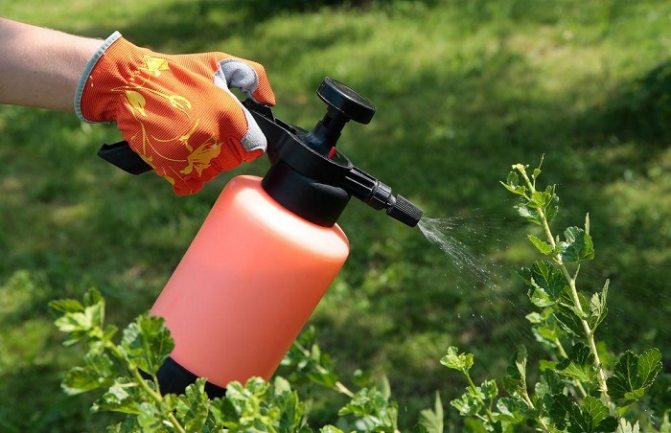

"Commander" loves moisture, but it cannot be poured - stagnant liquid will provoke decay of the roots. In hot summer they water it every day (2 liters for each bush). At the end of summer, the number of waterings decreases - watering every 1-2 days. On cloudy days, once a week is enough. Remember to mulch the ground with peat or hay.
Water from a spray bottle or by filling the grooves. Watering at the root will wash off the soil and dry the gooseberries.
The dense foliage of the "Commander" requires a haircut. Pruning is done in spring and fall. Remove broken, damaged, diseased branches growing deeper into the crown. Cut off branches older than 6 years without regret - they will no longer be fruit. Spring haircut is carried out before the appearance of the leaves, autumn - after they fall. Don't delete many branches at once. For a bush, this is stress.
Read also: Pepino - what kind of plant is it: how to grow pepino in the country
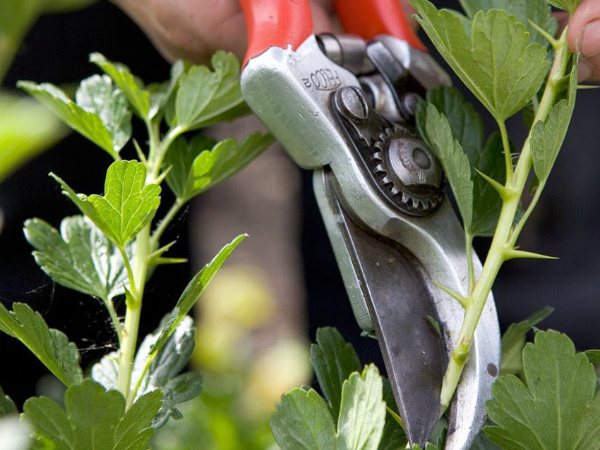

If you plant gooseberries in the fall, then during the spring digging, fertilize the soil with urea at the rate of 15 grams. per 1 m2. Every spring, add compost (6 L), ammonium sulfate (30 g), superphosphate (60 g), potassium nitrate (25 g). Organic matter is added 20 days after the end of flowering. At the beginning of summer - complex fertilizers. Follow the instructions carefully when diluting. One adult plant will require 20-25 liters. During fruit setting, gooseberries are watered with potassium humate (50 g.).
"Commander" is resistant to low temperatures, but it is better to hedge and protect it. In late autumn, the soil is carefully dug up, the plants are covered with burlap, spunbond, agril or any other material that allows air to pass through. If forecasters promise a harsh winter, then it is worth tying the branches and bending them to the ground - then, under the influence of the snow cover, they certainly will not break.
Pest and disease control
The commander is rarely affected by diseases and attacked by pests, but if this still happened, you need to correctly identify the problem and know how to deal with it.
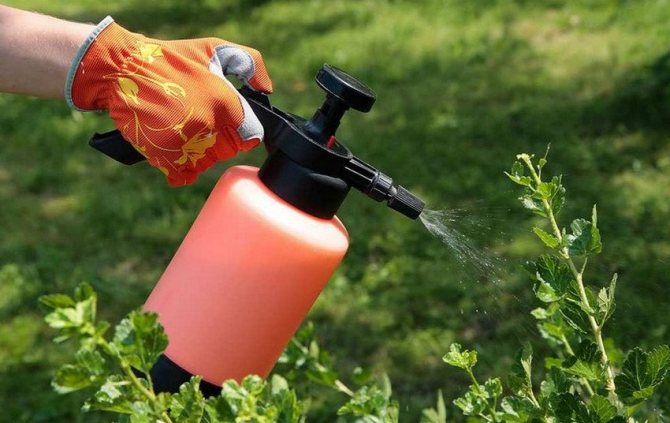

The following are the diseases that can occur in a hybrid and their main symptoms:
- stem desiccationf - cracks in the bark, the presence of fungal spores in them;
- septoria - grayish spots on the leaves;
- rust - orange and copper bumps on the seamy side of the leaves;
- gray rot - falling off and rotting of berries, leaves and shoots;
- mosaic disease - wilting of leaves, the appearance of pale green spots along the inner veins of the leaf plate.
Gooseberry treatments:
- Stem desiccation and septoria can be treated well with Bordeaux fluid. Prepare the preparation according to the instructions and treat the affected bushes before the leaves open.
- Copper oxychloride will help get rid of rust, which needs to be sprayed with gooseberries before flowering.
- To cure a bush from gray rot, remove leaves and shoots affected by the disease from the bush.
- There is no cure for the viral mosaic.
Almost all of these diseases arise from improper care of the bushes. Careful selection of planting material, regular pruning, weed removal is the best prevention of gooseberry diseases.
Also, the hybrid can be affected by some pests. The following are drugs that can help you fight them:
- aphid - Aktara, Aktellik, foam treatment of laundry soap;
- moth - Spark, Actellik, chamomile infusion;
- spider mite - infusion of wormwood, Bankol, Sunmight;
- gall midge - Fufanon, Karbofos;
- glass case - Aktellik, Iskra.
To prevent pests of gooseberries, use chemicals of systemic and contact action. Spraying should be carried out in the spring on a green cone and repeated after 2 weeks. For these purposes, preparations are suitable: Karbofos, Aktara, Actellik.
Site selection and soil requirements
The best for growing gooseberries "Vladil" will be sandy loam, sod-podzolic soil and loam.
When choosing a location, the following factors should be considered:
- The soil should be well soddy, loose and fertile.
- It is desirable that the site in this place have a slight slope in order to avoid stagnation of melt and rainwater. The variety does not tolerate prolonged waterlogging and can get sick with powdery mildew.
- The place should be open to the sun, but protected from cold winds and drafts.It is good if from the north or northeast side it is fenced off by a natural or man-made barrier.
If a suitable place was not found, it is easy to arrange it by making a small embankment in a well-lit area on the leeward side for the unhindered drainage of excess water.
Testimonials
★★★★★
Marina, 48 years old, summer resident, Rostov-on-Don. Commander is a good gooseberry, I use it to make preserves and jams. Unlike other varieties, I have never been sick.
★★★★★
Ivan, 60 years old, gardener, Moscow. I love the Commander for his unpretentiousness. I have 3 bushes growing, I have never had problems with pests or diseases. The only thing is that the berry becomes very shallow if the bush is not cut off.
★★★★★
Boris, 41 years old, gardener, Voronezh. The commander left it for a change. The taste is mediocre, the sour skin is not pleasant. For fresh consumption, we practically do not use it, we process it into jam.
Hide
Add your review
Gooseberry Commander does not have thorns, it is famous for its yield and frost resistance. The skin is thin, with sourness, the pulp is juicy, sweet and sour. With regular pruning, the berries do not shrink. Due to the poor keeping quality, ripe fruits are recommended to be consumed immediately.
0
Plant care
Simple rules for caring for the Commander gooseberry will preserve the health of the plant and provide the owners with a decent harvest.
The commander does not tolerate a lack of moisture. Because of this, the leaves of the plant become small, acquire a yellow color, the fruits do not gain mass and fall off. Regular watering will help you get a high-quality berry harvest. The amount of water depends on the age of the bushes, but not less than 30-50 liters per one bush.
Watering frequency for gooseberries:
- With the formation of ovaries and new shoots (second half of May - first decade of June).
- During the ripening of the berries.
- Moisture-charging irrigation (late September - mid-October).
The soil of the gooseberry bush should be moist all the time. This is easy to determine if you take a lump of earth in your palm and squeeze it - it should crumble well.
Fertilization
The commander needs annual feeding, which they begin to make from the second year of the bush's life.
Table: fertilization for feeding gooseberries
Pruning bushes
In the list of care measures, Vladil's pruning occupies almost the main place. If the bush is left without this procedure, it will become thick. In such foliage, pests feel great, diseases develop well.
Pruning of thornless gooseberries is carried out in spring or autumn. If the first option is chosen, then you need to do this very early - at the beginning of March, before the plant wakes up and sap flow begins.
Several rules for pruning gooseberry bushes:
- Immediately after planting, the seedling is cut, leaving only 4 buds on it.
- After the first year, it is necessary to leave 5 shoots, shortening them by 1/3 of the length.
- In subsequent years, remove all dry, weak, growing inside the crown, damaged by diseases shoots. Healthy shoots should be cut 1/3 of their length.
- Root shoots are also cut out, since it does not bear fruit, but only takes strength from the bush. In this case, there should be no hemp.
- Slices, especially large ones, are treated with garden varnish to prevent infection from entering the tissue.
- Only sharp garden tools should be used.
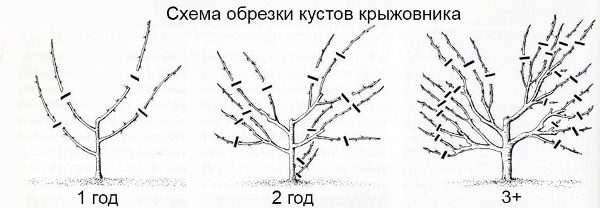

Pruning gooseberries annually makes the shrub neat and neat.
Reproduction
Gooseberries of the Komandor variety can be propagated by petioles, dividing the bush or layering.
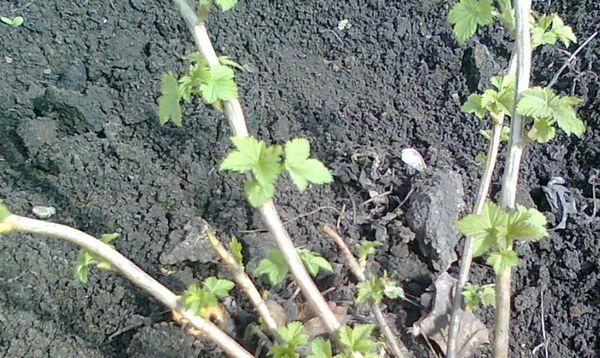

Each technique assumes its own nuances.
- With the help of cuttings. Young branches cut in June are planted in the soil after the mature plants have been harvested.
- Division of the bush. Young gooseberry shoots are dug up from the old bush due to the isolated growth. The seedlings already have a formed root system, they are absolutely ready for adaptation to a new place.
- Layers.You can propagate gooseberries in this way using the lower shoots. They are dropped to a depth of 15 cm. The branches from the parent plant are not cut off, but sprinkled with soil. New shoots appear already with the arrival of spring.
See also
Description and characteristics of the consul gooseberry variety, planting and care
To read
With the reproduction of the Commander's gooseberry using the above methods, fruiting will begin by the 6th year of life.

